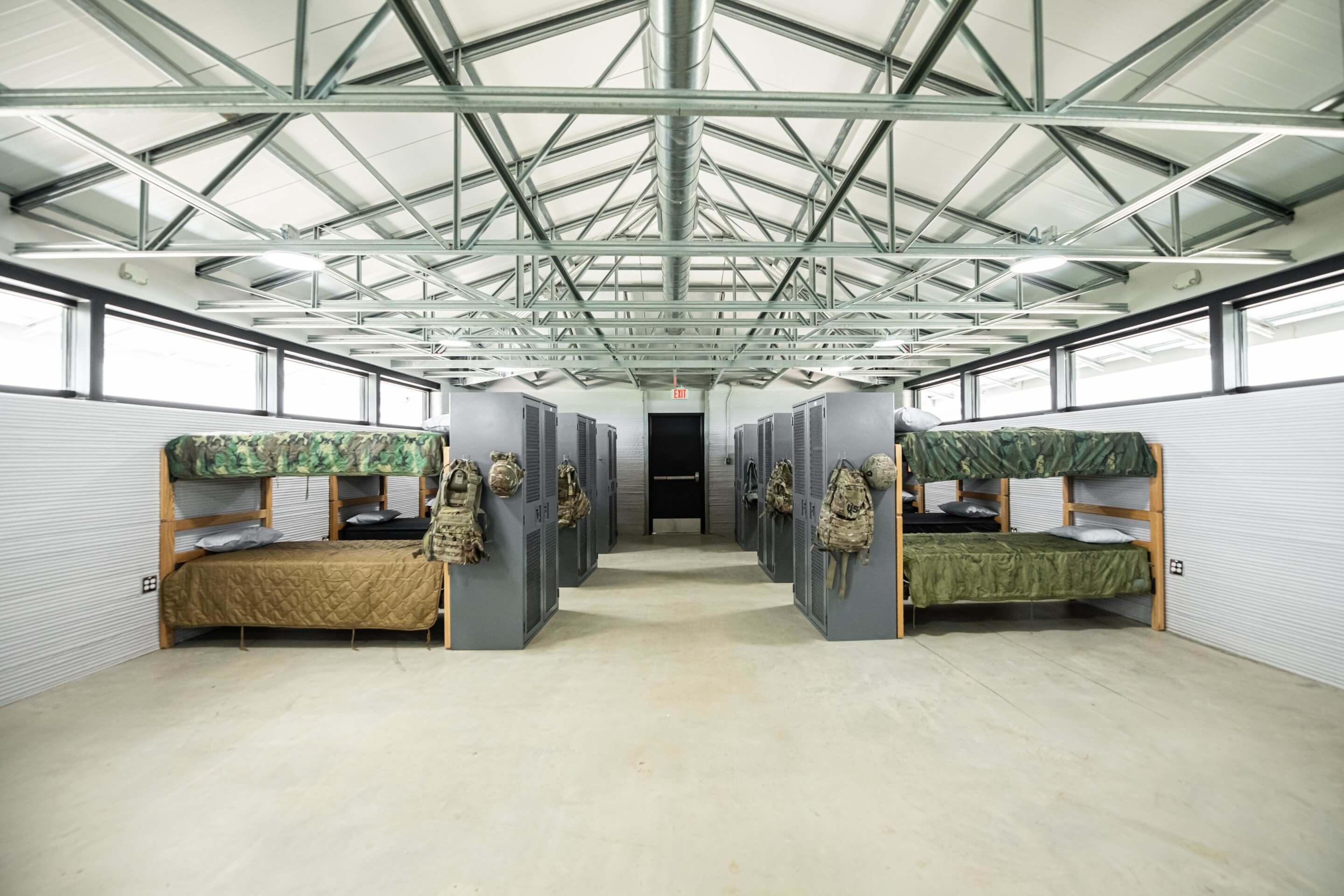In the last few years, 3D printing has become an increasingly plausible construction technique for the building industry thanks to the innovations of companies like ICON, a Texas-based robotics and advanced materials startup. This year alone, ICON has developed a house with Lake|Flato Architects, a mass-market development with real estate developer 3Strands, and collaborated with the Bjarke Ingels Group on the Mars Dune Alpha for NASA.
Their latest feat, however, demonstrates a new scale achievable by 3D printing technology through the completion of a barracks using LavaCrete, the company’s proprietary concrete blend. At 3,800 square feet, it is the largest 3D-printed structure to be completed in North America. Created for the Texas Military Department (TMD), the single-story barracks can house up to 72 soldiers at a time on the grounds of the Camp Swift Training Center in Bastrop, Texas, while they train for missions.
“Guardsmen from all over Texas come to Camp Swift to train and to mobilize for deployments,” said TMD director of facilities, Colonel Zebadiah Miller. “The printed barracks will not only provide our Soldiers a safe and comfortable place to stay while they train, but because they are printed in concrete, we anticipate them to last for decades.”

Funded by TMD through the Small Business Innovation Research (SBIR) program, an initiative established by the US Congress in 1982 to fund research and development by small businesses, the project was a collaboration between ICON, Logan Architecture, and structural engineering firm Fort Structures. The outer wall of the barracks was created using ICON’s Vulcan construction system, a 15.5-foot-wide armature that can precisely pour between 5 and 10 inches of concrete per second. The construction progress was monitored using a tablet-based operating system that translates floor plans into print jobs and detects errors down to the millimeter. Ribbon windows and a prefabricated roof were then placed atop the concrete as the final step, clearly exhibiting the streamlined fabrication processes 3D printing can make possible.
Following its completion, ICON co-founder Evan Loomis said that the company will continue “to deliver dignified, resilient shelter for social housing, disaster-relief housing, market-rate homes, and now, homes for those serving our country. We are scaling this technology across Texas, the U.S., and eventually the world. This is the beginning of a true paradigm shift in homebuilding.”